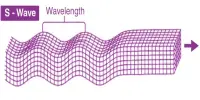The supermassive black hole at the center of the Milky Way, Sagittarius A*, has been found to be surrounded by a bubble of heated plasma. The hot spot, which is traveling at a speed of around one-third the speed of light, offers fresh information on the kind of environment that surrounds the black hole in our galaxy.
According to a statement from Maciek Wielgus of the Max Planck Institute for Radio Astronomy, “We think we’re staring at a hot bubble of gas flying around Sagittarius A* on an orbit roughly in size to that of the planet Mercury, but performing a full loop in just under 70 minutes.”
Wielgus, who has co-authored a new report outlining the discovery, continues, “This demands a mind-blowing velocity of around 30% of the speed of light.
Such a discovery follows the Event Horizon Telescope collaboration, which earlier this year unveiled the first-ever image of Sagittarius A* by combining eight radio telescopes from around the world. When scientists examined data from only one of these telescopes, the Atacama Large Millimeter/submillimeter Array (ALMA), situated in Chile’s Atacama Desert, they discovered the hot area.
Wielgus, who has co-authored a new report outlining the discovery, continues, “This demands a mind-blowing velocity of around 30% of the speed of light.
Such a discovery follows the Event Horizon Telescope collaboration, which earlier this year unveiled the first-ever image of Sagittarius A* by combining eight radio telescopes from around the world. When scientists examined data from only one of these telescopes, the Atacama Large Millimeter/submillimeter Array (ALMA), situated in Chile’s Atacama Desert, they discovered the hot area.
In April 2017, ALMA just so happened to notice a flare coming from the galactic center as it was gathering data. These flares are hypothesized to be the result of magnetic interactions between pockets of hot gas orbiting very closely and quickly around black holes.
However, it has been difficult to validate this notion because flares similar to this have only ever been seen with X-ray and infrared telescopes. Astronomers may examine the magnetic field surrounding Sagittarius A* thanks to ALMA, which can identify polarized radio emissions.
The fact that such flares were previously only plainly visible in X-ray and infrared views of Sagittarius A* is what Wielgus calls “truly novel and exciting.” Here, for the first time, is very convincing proof that circling hot spots can be detected by radio measurements.
Co-author Monika Mocibrodzka succinctly summarized the consequences of this study by saying, “We find significant evidence for a magnetic genesis of these flares and our observations provide us a clue regarding the geometry of the process.”
For instance, the investigation revealed that the hot gas bubble is contained within a rotating disk of matter that revolves around the black hole counterclockwise. In turn, this offers fresh information about the structure and motion of the magnetic field surrounding Sagittarius A*.
While these discoveries help us understand the strangeness that resides at the galactic center, more thorough observations of upcoming flares will be required to clarify the black hole’s surrounds.
Wielgus hopes that one day he and others will feel confident in claiming to “know” what is happening in Sagittarius A*.
















